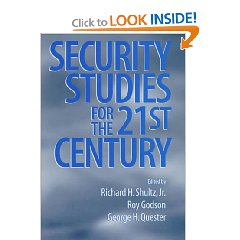August 30, 2000
Richard H. Shultz
This book is actually a guide for professors, with chapters presenting specific courses in security studies complete with fifteen-week outlines and all recommended readings. It is in my view a very fine structured reading program for the adult policy maker who is well beyond the need for going back to school, but much in need a fast means of coming to grips with the dramatic changes that have occurred in our international security environment. Early on it addresses the competing approaches to security studies-from the traditionalist national, international, and regional security approaches to the emerging transstate (non-state actors acknowledged as major sources of conflict and instability) to the global (to include human rights, environmental protection, economic prosperity, and social development as fundamental security issues). It's iteration of the weaknesses of 20th century security studies reads like a list of current biases inherent in those prescribing defense reform today: overemphasis on theory (or worst-case scenarios); insufficient attention to non-combat missions for military forces in peacetime; excessive focus on the US, Europe, and Russia to the exclusion of the rest of the world; too little attention to culture and the relationship of culture to conflict deterrence and resolution; insufficient attention to history prior to World War II; and finally, a neglect of non-military instruments of power and their interaction with the military. Intelligence in particular is singled out as being a relatively recent open topic for discussion, meriting more study. The chapters on Transstate Security by Roy Godson (on non-state actors and the growing prevalence of “global ungovernability”) and on Nontraditional Uses of Military Force by George H. Quester, as well as the introduction and conclusion by Richard H. Schultz, Jr., are each, alone, worth the price of the book. Each chapter, with its course outline, discussion, and recommended references, is worthy of careful examination by any serving or aspiring policymaker. However distinguished one's pedigree, we are all students today, and Graham E. Fuller is correct when he notes on page 124 that “most policymakers do not even fully realize the dynamics of the new world we live in.”





